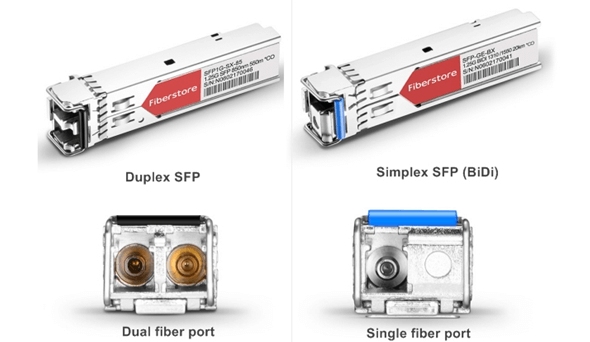Cabling Fiber SFPs
Fiber Transceivers SFP (Small Form-Factor Pluggable)
What is an SFP and why is it used?
It’s a Small Form-Factor Pluggable transceiver that is used to connect a switch, router, firewall or other network devices to Copper or Fiber cables. SFP is sometimes called a mini-GBIC since they are small giga bit interfaces. Performs Electrical and Optical conversions to extend original length distance.
What is the difference between Single Mode SFP and Multi-Mode SFP?
Cable type used are different Transmission distance is different Single Mode SFP is more expensive You can check below table for more information on speeds, distances, and connector types.
SFP Types
Simplex SFP
transmits only one direction at a time which in below you is represented by Single Fiber Port
Duplex SFP or BiDi Transceiver
can Send and Receive at the same time which below is represented by Dual Fiber Port, it should be used in pairs with the same Wavelength
What is the difference between SFP and SFP+?
SFP
- Supports up to 4.25 Gbps
- Shorter transmission distance [Check SFP Types table]
- In most cases you can plug an SFP into an SFP+ but the speed will be limited to 1 Gbps
SFP+
- Supports speeds up to 10 Gbps
- Longer transmission distance [Check SFP Types table]
- SFP+ accepts SFP optics but at a reduced speed of 1 Gbps
- You can’t plug SFP+ into an SFP port since SFP+ doesn’t support speeds - less than 1 Gbps

